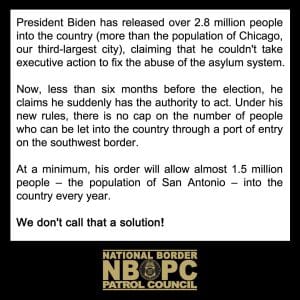Nevertheless, one only needs to read the proposal to see the “uniformity” assertion is absurd considering Customs and Border Protection officers (CBPOs) will continue coverage under the Customs Officer Pay Reform Act (COPRA). Meanwhile, Border Patrol agents will be converted from Administratively Uncontrollable Overtime (AUO) to Law Enforcement Availability Pay (LEAP), exempt from earning Fair Labor Standards Act (FLSA), and still excluded from coverage under COPRA.
For this reason, the National Border Patrol Council created the following chart to address the frivolous assertion regarding uniformity and illustrate the significant disparity in potential overtime earnings under current systems and increased disparity under the proposal. The figures in the chart are based on the Office of Personnel Management locality pay table for the San Diego geographic area. Therefore, potential earnings will be different in other geographic areas.
Although all CBPOs may not average two hours of overtime per day, Border Patrol agents are required to work an average of two hours per day in order to maintain 25% under LEAP and AUO. Therefore, the figures for each pay grade calculate potential earnings for employees using an average of two hours of overtime per day for all employees. For clarification, COPRA provides 200% rate of pay for each hour worked beyond the regular eight-hour day. AUO only provides approximately 140% for each hour worked beyond eight hours, up to the first two hours. After two hours, the percentage decreases for each additional hour worked.
Lastly, COPRA provides substantially higher percentages for differential pay to compensate for work performed on Sundays and during night hours, to include more hours of coverage for night differential. COPRA also provides a one to five percent rate of pay for language proficiency, depending on the score an employee receives when tested. None of these differentials were included in the figures.



